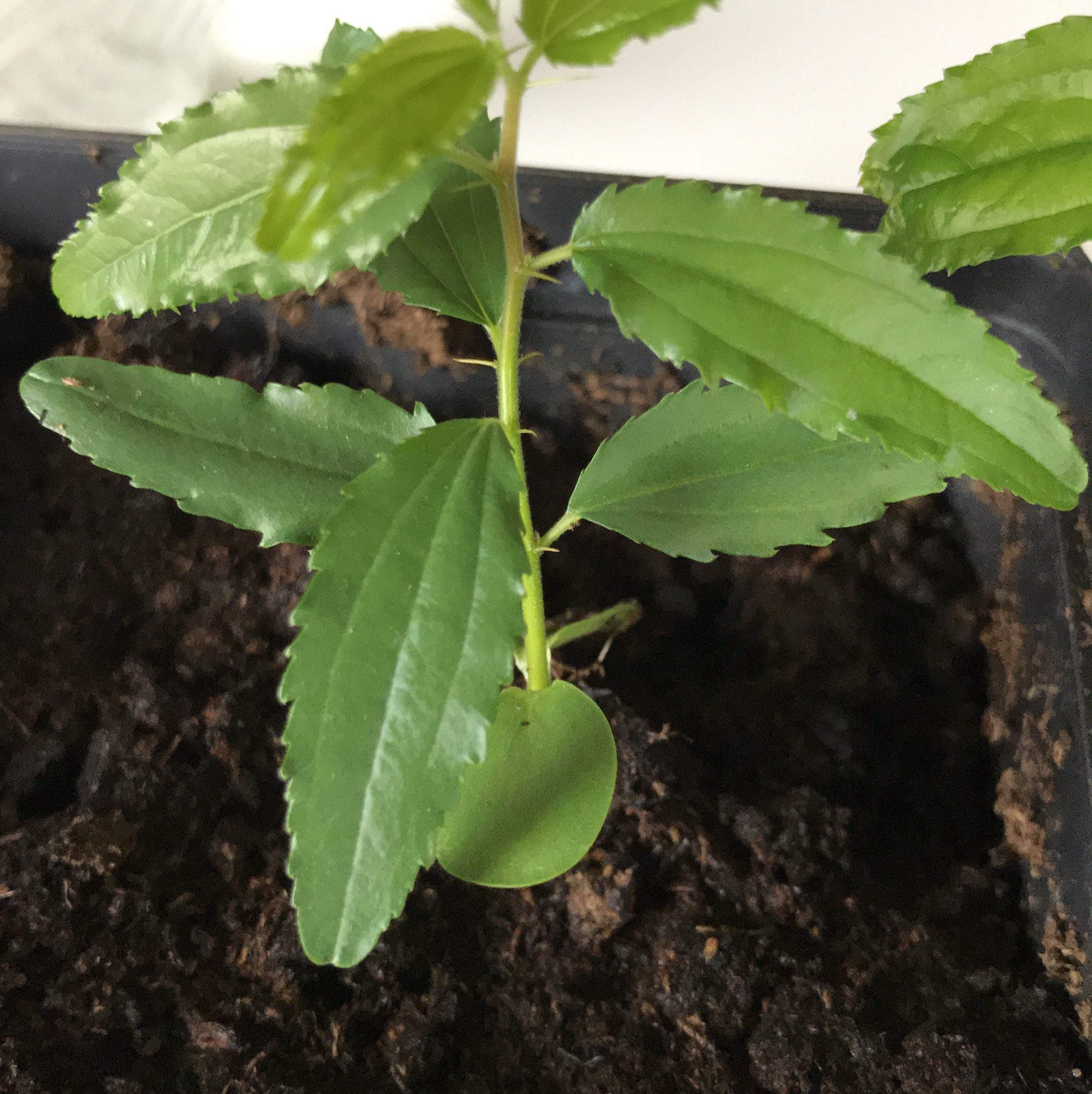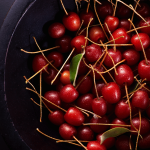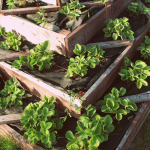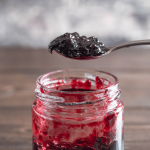Discover the World of Rhubarb from Garden to Table
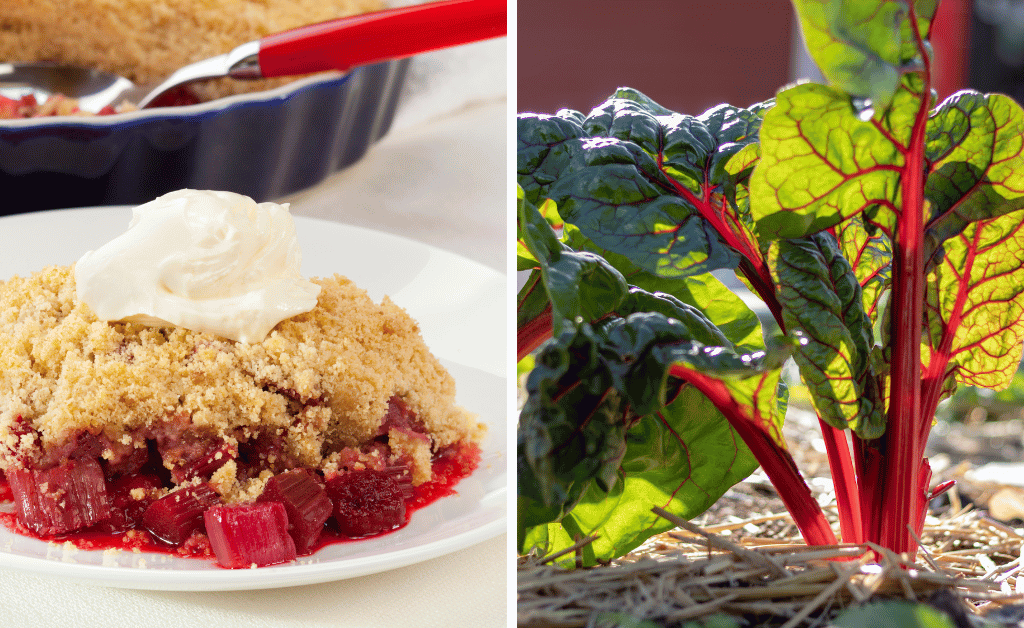
Rhubarb (Rheum rhabarbarum), a perennial plant with a rich history and diverse applications, has captivated gardeners, chefs, and health enthusiasts alike. While often mistaken for a fruit due to its tart flavor and frequent use in desserts, rhubarb is, in fact, a vegetable. This article aims to provide a comprehensive guide to understanding rhubarb, covering essential topics such as its safety, cultivation techniques, and culinary uses.
In addition to general guidelines and tips, this article will also feature firsthand experiences with growing and utilizing rhubarb. These personal insights come from years of cultivating various rhubarb variants, including a unique “Strawberry Rhubarb” that thrives in full sun, and experimenting with its culinary applications—from fabulous crumble pies to refreshing beverages.
Whether you are a seasoned gardener or someone curious about incorporating rhubarb into your diet, this guide offers something for everyone. Given the varying geographical and climatic conditions that affect gardening experiences, the information presented here aims to be as inclusive as possible.
Safety and Edibility of Rhubarb
Are Rhubarb Leaves Poisonous?
Rhubarb leaves contain oxalic acid, a compound that is toxic when ingested in large quantities. Consuming the leaves can lead to symptoms such as nausea, vomiting, and in severe cases, kidney failure. This information is supported by a study on the history and statistics of culinary rhubarb production in North America by C. Foust and D. E. Marshall. Therefore, it is crucial to exercise caution and avoid consuming or using rhubarb leaves in any form.
Personal Experience: While we have harvested rhubarb stalks multiple times, we always exercise caution to separate the leaves and dispose of them safely, ensuring they are out of reach of pets and children.
Edible Parts of Rhubarb
The stalks of rhubarb are the only parts that are safe to consume. They are rich in vitamins and minerals, including Vitamin C and potassium. This is corroborated by a study on naturally occurring toxins in foods by I. Morton. The stalks are often used in a variety of culinary applications, from pies and crumbles to sauces and beverages.
Personal Experience: We enjoy eating rhubarb stalks in various forms. While we do consume some of it raw, most of it goes into making a fabulous crumble pie. To mitigate the high oxalate content in rhubarb, we always pair our crumble pie with vanilla ice cream, which is rich in calcium. This helps our bodies handle oxalate without turning it into a kidney stone.
Cultivating Rhubarb
Growing Rhubarb from Seed
Growing rhubarb from seed is a rewarding but long-term commitment. It usually takes a few years for the plants to mature enough to be harvested. During this time, it’s essential to provide the plants with adequate nutrients and water to promote healthy growth. A study on rhubarb cultivation techniques provides further insights into the best practices for growing rhubarb from seed.
Personal Experience: We have grown a couple of rhubarb plants from seed, and they are now about 5 years old. We’ve harvested from them a few times but focused on promoting growth initially.
Harvesting Rhubarb
The best time to harvest rhubarb is during the late spring and early summer when the stalks are most flavorful and tender. It’s advisable to twist and gently pull the stalks slightly downward for harvesting, as cutting them can expose the plant to risks such as rot.
Personal Experience: We’ve harvested from our rhubarb plants multiple times this season, taking care to leave some of the younger leaves untouched to encourage regrowth. After midsummer, we generally refrain from harvesting to allow the plants to accumulate nutrients for the following season.
Special Variants: Strawberry Rhubarb
Rhubarb comes in various variants, each with its unique characteristics and care requirements. One such variant is the “Strawberry Rhubarb,” known for its preference for full sun, which is contrary to most other rhubarb types that prefer partial shade.
Personal Experience: We have a “Strawberry Rhubarb” variant that we bought at a nursery. It’s unique in that it actually prefers full sun, unlike other variants we’ve encountered.
Future Plans
Dividing rhubarb plants is an excellent way to manage their size and promote more vigorous growth. This is typically done in the early spring before the plant starts its new growth cycle.
Personal Experience: In the upcoming spring, we plan on dividing our “Strawberry Rhubarb” as it’s getting a bit large.
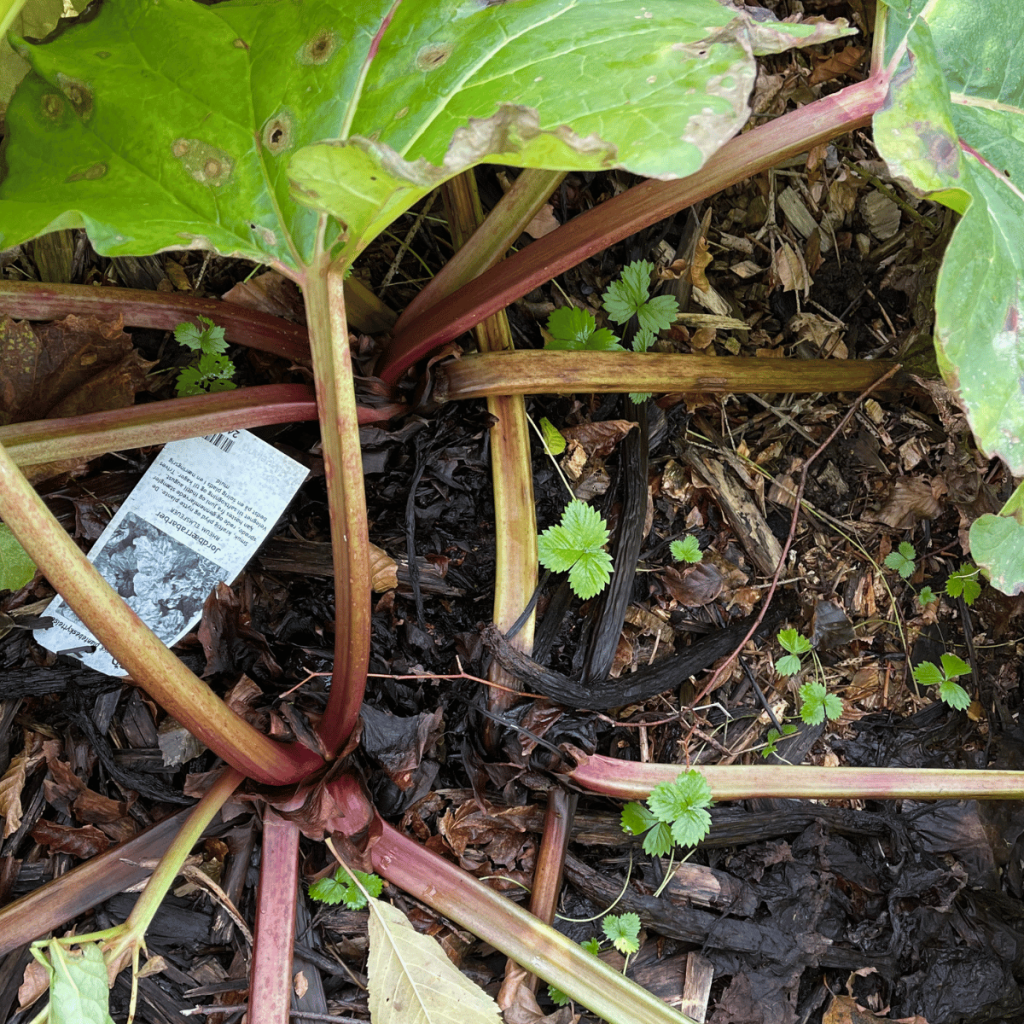
Culinary Uses of Rhubarb
Rhubarb in Baking
Rhubarb in Baking: A Versatile Ingredient
Rhubarb’s unique tartness makes it a versatile ingredient in the culinary world, especially in baking. While some may argue that rhubarb is best when simply roasted and served with ice cream, there’s a lot more to explore. From classic rhubarb crumbles to innovative rhubarb and custard scones, the possibilities are endless. BBC Good Food offers a comprehensive list of rhubarb recipes that can be used in both sweet and savory dishes, showcasing its versatility.
What Makes Rhubarb Special in Baking?
Rhubarb brings a vivid pink color and a distinctively tangy taste to baked goods. Whether it’s stewed, poached, or roasted, rhubarb can be incorporated into a variety of dishes. For instance, rhubarb crumble is a comfort food classic that pairs a sharp, fruity filling with a sweet, crumbly topping. The site also mentions other innovative recipes like rhubarb and custard scones, rhubarb gin, and even rhubarb-infused French toast.
Tips for Using Rhubarb
When buying rhubarb, look for watermelon pink stems with pale green leaves for forced rhubarb, and redder tones with bright green leaves for maincrop rhubarb. Preparing rhubarb involves stripping off any rough, stringy ribs and washing the stalks before slicing them into your preferred shape. It’s crucial to remember never to eat rhubarb leaves as they contain oxalic acid, which is poisonous.
For more inspiration and a list of top rhubarb recipes, you can visit BBC Good Food’s article on Top 15 Rhubarb Recipes.
Personal Experience: Most of our harvested rhubarb goes into making a fabulous crumble pie. To counterbalance the high oxalate content in rhubarb, we always pair our crumble pie with calcium-rich vanilla ice cream.
Rhubarb Beverages: More Than Just a Refreshing Drink
Rhubarb’s tangy flavor profile isn’t just for pies and crumbles; it also makes for a delightful addition to beverages. Whether you’re looking to quench your thirst on a hot summer day or seeking a unique flavor twist, rhubarb-based drinks like juices and lemonades offer a refreshing alternative.
The Nutritional Benefits of Rhubarb Beverages
Rhubarb is not only delicious but also nutritious. According to WebMD, rhubarb is an excellent source of vitamin K, which is essential for bone health and blood clotting. It’s also rich in antioxidants and other important vitamins and minerals, such as vitamin A and fiber, which provide a variety of health benefits, from improving bone health to aiding digestion.
How to Prepare Rhubarb Beverages
Preparing rhubarb for beverages is relatively straightforward. The stalks should be washed and sliced into your preferred shape. It’s important to remember that rhubarb leaves should never be consumed as they contain oxalic acid, which is poisonous. Once prepared, rhubarb can be blended into smoothies, juiced, or even used to make homemade kombucha.
For more detailed information on the health benefits of rhubarb and how to incorporate it into your diet, you can read the full article on WebMD.
Personal Experience: The remaining stalks from our harvest are used to make rhubarb juice or lemonade, offering a refreshing alternative to traditional beverages.
Peeling Rhubarb: A Matter of Taste and Texture
The question of whether to peel rhubarb stalks before using them in recipes is a subject of much debate among gardeners and home cooks. While some argue that peeling is unnecessary, others insist that it significantly improves the texture and taste of the final dish.
To Peel or Not to Peel: What’s at Stake?
Peeling rhubarb can indeed remove some of its tartness, but it also eliminates some of the fiber and nutrients. According to Practical Self Reliance, peeling is often a matter of personal preference. Some people peel rhubarb to avoid stringiness in recipes like jams, where a smooth texture is desired. On the other hand, leaving the peel on can add color and a more robust flavor to dishes.
Factors Influencing the Decision to Peel
The decision to peel or not can depend on various factors:
- Seasonality: Early spring rhubarb tends to have tender peels, but as the season progresses, the peels become tougher.
- Recipe Requirements: Some recipes, like rhubarb jam and compote, benefit from peeling for a smoother consistency.
- Pesticide Concerns: If you’re unsure whether the rhubarb is organic, it’s safer to peel it to avoid potential pesticide residue.
For a more detailed discussion on this topic, you can read the full article on Practical Self Reliance.
Personal Experience: We have a personal preference when it comes to peeling rhubarb. For some recipes, we peel the stalks, but for others, we leave the skin on to retain the nutrients and fiber.
Storing and Preserving Rhubarb
Freezing Rhubarb
Freezing is one of the most straightforward methods for preserving rhubarb. It allows you to store the stalks for an extended period without losing much of their flavor or nutritional value. Research on the effects of freezing on rhubarb confirms that this is an effective preservation method.
Personal Experience: We often freeze rhubarb, especially when we have a bountiful harvest. This allows us to enjoy rhubarb dishes even when it’s not in season. Due to the oxalic acid content in rhubarb, we find it beneficial to consume the stalks gradually. Freezing them allows us to manage our intake of oxalic acid by spreading it out over time.
Refrigerating Rhubarb: A Guide to Short-Term Storage
When it comes to short-term storage of rhubarb, refrigeration is a convenient and effective option. However, there are some key considerations to keep in mind to ensure that your rhubarb stays fresh and retains its quality.
How to Properly Store Rhubarb in the Refrigerator
According to Cook’s Illustrated, the key to storing rhubarb in the refrigerator is to wrap the stalks snugly enough to prevent them from drying out, but not so tightly that ethylene gas can’t escape. This method helps maintain the freshness of the rhubarb while preventing spoilage. Another source, Fas Kitchen, recommends using the rhubarb within 1 to 2 weeks for the best flavor, although it can last longer if properly stored.
Additional Tips for Refrigerated Storage
- Ventilation: Ensure proper ventilation in the storage bag to prevent moisture buildup, which can lead to mold.
- Leaf Removal: Always remove the leaves before storing, as they contain toxic oxalic acid.
- Location: Store the wrapped rhubarb stalks in the vegetable crisper of your refrigerator for optimal results.
For more detailed guidelines on how to store rhubarb in the refrigerator, you can read the full article on Cook’s Illustrated.
Rhubarb Composting: A Controversial Topic
The subject of composting rhubarb leaves is a contentious one. While many gardeners and compost enthusiasts believe that rhubarb leaves can be safely composted, some sources suggest otherwise due to their high oxalic acid content.
The Debate on Composting Rhubarb Leaves
While it’s commonly accepted that rhubarb leaves should not be consumed due to their toxic oxalic acid content, the question of whether they can be safely composted is still up for debate. According to Gardening Inside, composting rhubarb leaves can be dangerous to human health. The article strongly advises against adding rhubarb leaves to compost piles, suggesting that they are best discarded in the garbage or used as a green manure to add nutrients to the soil.
Alternative Methods for Rhubarb Leaf Disposal
If you’re hesitant about composting rhubarb leaves, there are alternative methods for disposal:
- Mulching: Rhubarb leaves can be used as mulch, but it’s recommended to place a protective layer of plastic over them to prevent them from being washed away by rain.
- Green Manure: The leaves can be used as a green manure to add nutrients to your soil.
- Garbage Disposal: While not the most sustainable option, discarding the leaves in the garbage is considered the safest route by some experts.
For a more detailed discussion on this topic, you can read the full article on Gardening Inside.
Personal Experience: We make sure to compost the rhubarb leaves separately, ensuring they break down fully before adding them to our garden soil.
Future Plans: Rhubarb Juice and Lemonade
If you’re looking for alternative ways to use your rhubarb harvest, consider making rhubarb juice or lemonade. These beverages can also be frozen for later use.
Personal Experience: Aside from pies and crumbles, we also use our rhubarb to make juice and lemonade. These beverages offer a refreshing twist and can be enjoyed throughout the year when frozen.
Final Thoughts on Rhubarb: A Versatile and Rewarding Plant
Rhubarb is a fascinating plant with a rich history and a wide range of applications, from culinary delights to home gardening. While it’s essential to be cautious about the oxalic acid content in the leaves, the stalks offer a plethora of uses and health benefits. Whether you’re a seasoned gardener or a culinary enthusiast, rhubarb has something to offer for everyone.
Personal Experience: Over the years, we’ve found rhubarb to be a rewarding addition to our garden and kitchen. From growing different variants like “Strawberry Rhubarb” to experimenting with recipes like crumble pie and rhubarb lemonade, it’s been a journey of discovery and enjoyment. We’ve also found ways to manage the oxalic acid content, such as pairing rhubarb dishes with calcium-rich foods and freezing the stalks for gradual consumption.
By understanding its growth requirements, safety precautions, and culinary versatility, you can make the most of this unique plant. Whether you’re interested in its horticultural aspects or its culinary applications, rhubarb is a plant that promises both challenges and rewards.
Explore More About Scandinavian Gardening
If you’ve found this comprehensive guide on rhubarb intriguing, you’ll likely enjoy exploring other fruits and berries that thrive in Scandinavian gardens. We’ve put together a detailed guide that covers the top 10 berries and fruits perfectly suited for these unique climatic conditions.
Read Our Comprehensive Guide on the Top 10 Berries and Fruits for Scandinavian Gardens
Dive into the world of Scandinavian gardening and discover more plants that can enrich your garden and your table. From lingonberries to cloudberries, learn how to cultivate, harvest, and enjoy these northern gems.

